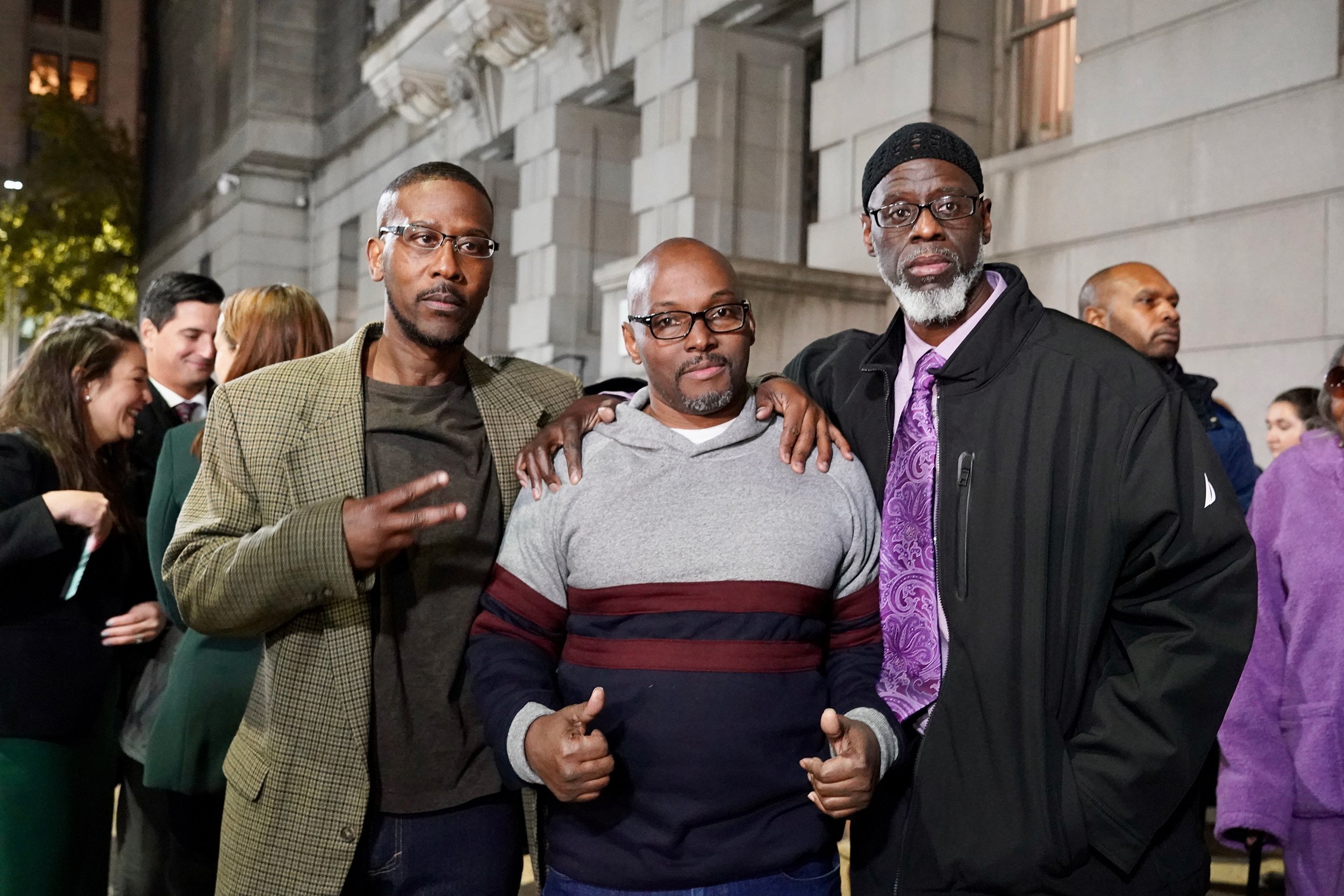
Three Baltimore men who spent 36 years in prison were released after authorities say they were falsely convicted of a 1983 murder. Alfred Chestnut, Ransom Watkins and Andrew Stewart were granted a writ of innocence after being convicted of first-degree murder of a middle school student, DeWitt Duckett. According to police, Duckett, 14, was shot and killed for his coveted Georgetown University basketball jacket in November 1983.
Chestnut has maintained his innocence since his arrest and the parole board denied his early release in part because he refused to admit responsibility for the shooting, the state’s attorney said. After he filed an information request this past spring, he discovered new evidence that was kept from his attorneys during trial. He reached out to Baltimore’s Conviction Integrity Unit, which was reviewing old convictions.
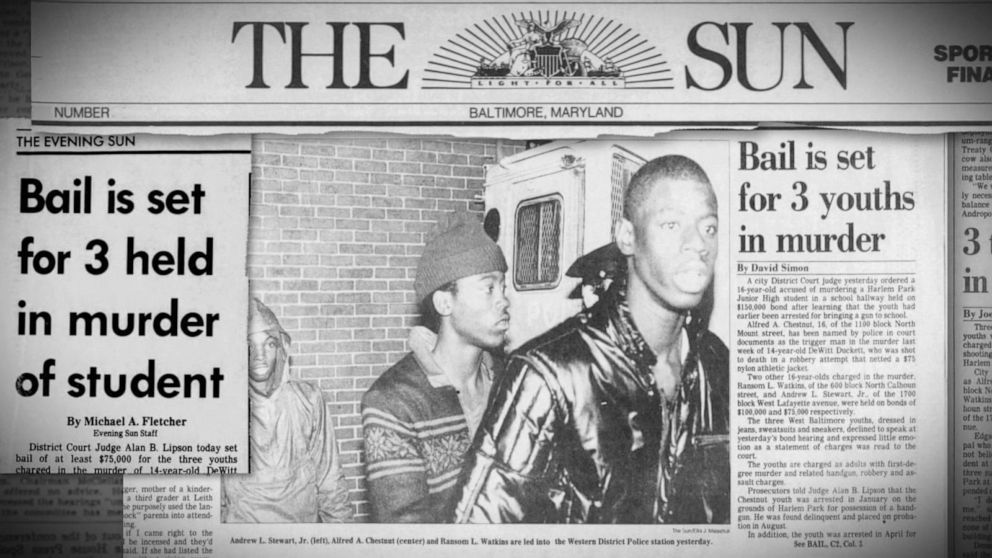
Chestnut and Watkins were 16 at the time of their arrest and Stewart was 17. The three teenagers had been skipping high school classes to visit former teachers at Harlem Park Junior High. Their teachers said they were being “silly,” but not threatening. School security escorted them off campus about half an hour before the murder occurred, according to a joint petition filed by the men and Baltimore City State’s Attorney Marilyn Mosby.
Watkins lawyer said the three teenagers were each arrested Thanksgiving morning, waking up with police with guns drawn on them. They were convicted based on witness testimony and what prosecutors at the time said was a crucial piece of evidence — a Georgetown jacket found in Chestnut’s bedroom. Chestnut’s jacket had no blood or gunshot residue and his mother was able to produce a receipt. A store clerk also testified that she had purchased it recently, the joint petition said.
Lawyers involved in the case said they were “horrified” to see the amount of exculpatory evidence that was hidden from the defense team and jury. Both the suspects and trial witnesses, all minors, were interrogated by police without their parents. Potential witnesses were interviewed in a group and told to “get their story together,” according to Chestnut’s lawyers. Anonymous calls identifying another shooter were kept from the defense, Mosby said. That teenager was seen after the shooting wearing what appeared to be Duckett’s jacket and confessing to the murder, she said. That suspect has since died and all trial witnesses have since recanted. “We have intentional concealment and misrepresentation of the exculpatory evidence, evidence that would have showed that it was someone else other than these defendants,” Mosby said.
Mosby apologized to the men “I don’t think that today is a victory, it’s a tragedy. And we need to own up to our responsibility for it,” Mosby said. “There’s no way we can repair the damage to these men, when 36 years of their life were stolen from them. You were all arrested on Thanksgiving 1983. Now you are free to spend the holidays with your loved ones for the first time in 36 years,” Mosby said in a press conference. The men are now in their early fifties preparing to enter adulthood on the outside for the first time and at least two have never driven a car before. Now, late in life, they will experience a world very different from the one they were barred from since their teens.
Read more
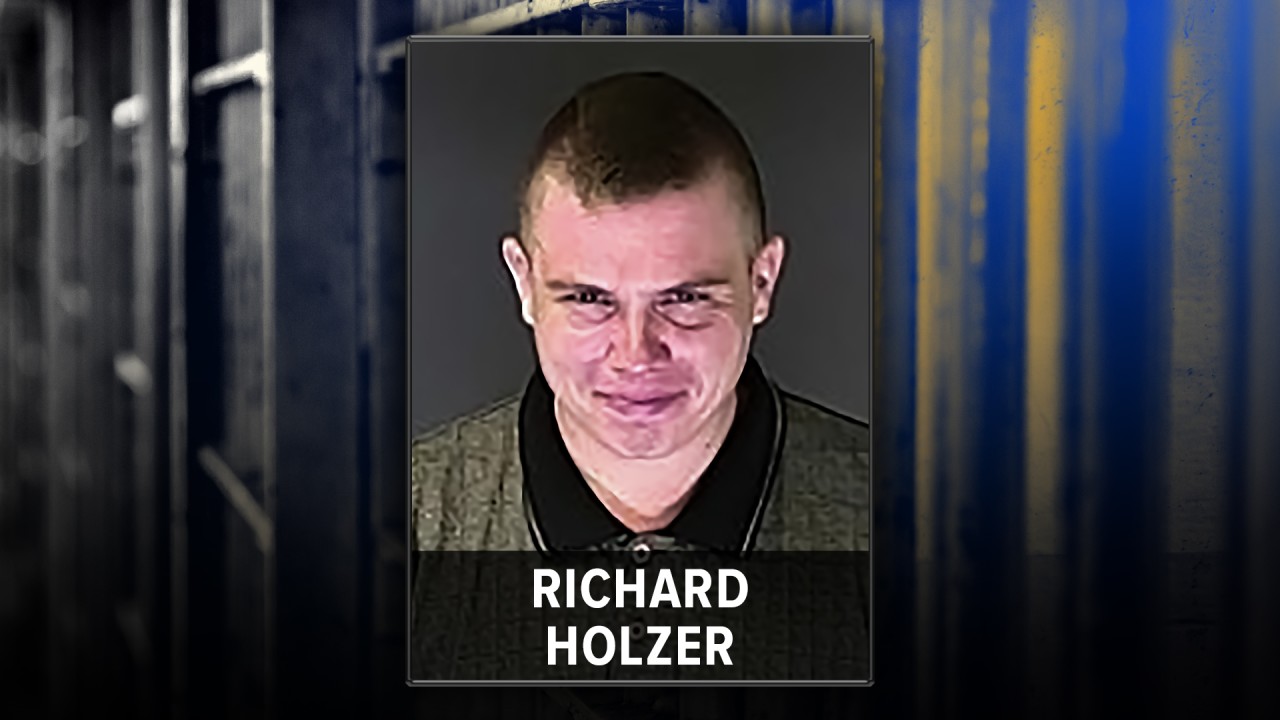
The FBI has arrested a 27-year-old Colorado man who was allegedly planning to bomb a synagogue in Pueblo. Court documents say Richard Holzer was arrested after he examined fake pipe bombs that had been prepared by co-conspirators who turned out to be undercover agents. His arrest came just two days before his planned bombing of The Temple Emanuel synagogue in Pueblo, Colorado.
“After being contacted by undercover FBI agents posing as fellow white supremacists, Mr. Holzer indicated that he wanted to do something that would let Jewish people in the Pueblo community know that they are not welcome and that, according to him, they should leave or they will die,” U.S. Attorney for the District of Colorado Jason Dunn said.
Undercover FBI agents had been tracking and interacting with Holzer since late September after he came on their radar for continually talking about killing Jews in online forums. The investigation of Holzer began after an undercover FBI agent purporting to be a woman who supports white supremacy contacted him on Facebook in September. Holzer allegedly sent the agent pictures and video of himself with guns and images related to white supremacy.
Agents say Holzer once wrote on Facebook, “I wish the Holocaust really did happen… they need to die.” According to court documents, Holzer messaged the undercover agent about initiating a racial holy war and said with was going to Temple Emanuel “to scope it out.” He told the agent that he planned to poison the synagogue with arsenic-something he claimed to have done before, but ultimately wanted to shut the synagogue down and condemn it.
That agent arranged for him to meet with friends who were actually more undercover agents on Oct. 17 in Colorado Springs. He allegedly talked to them about his plan before volunteering that he could use Molotov cocktails on the building when asked what other methods he was considering to shut down the building. The FBI claims that Holzer was the first person to mention using explosives during the meeting. After they visited the synagogue later that day, the affidavit says Holzer observed that Molotov cocktails would not be enough, and he and the agents then discussed using pipe bombs, which the agents offered to supply.
During a meeting where the agents brought what Holzer thought were live explosives, he described them as “absolutely gorgeous” and said they should go ahead with the attack overnight to avoid police, the court document said. The agents arrested him during that meeting.
The Temple Emanuel synagogue is the second-oldest in Colorado and was completed in 1900, according to Temple Emanuel’s website. It has a congregation of about 30 families and a rabbi from Denver who travels two hours away to Pueblo twice a month.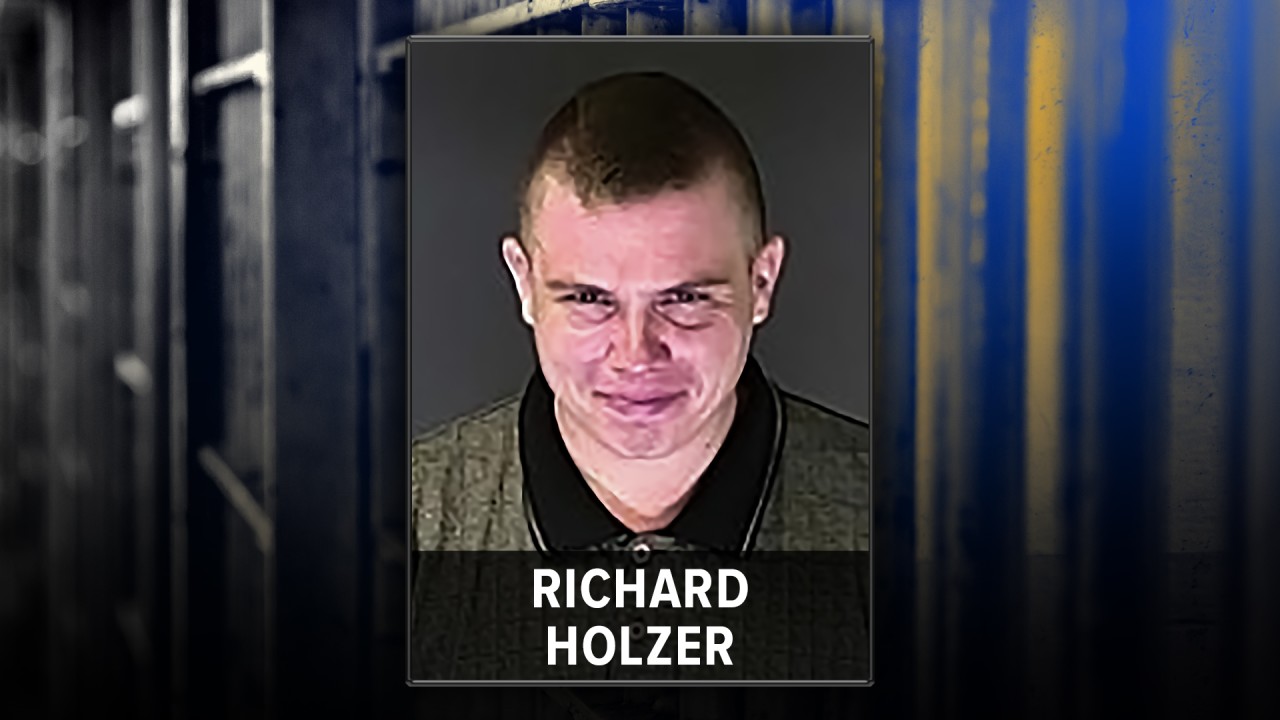
Read more
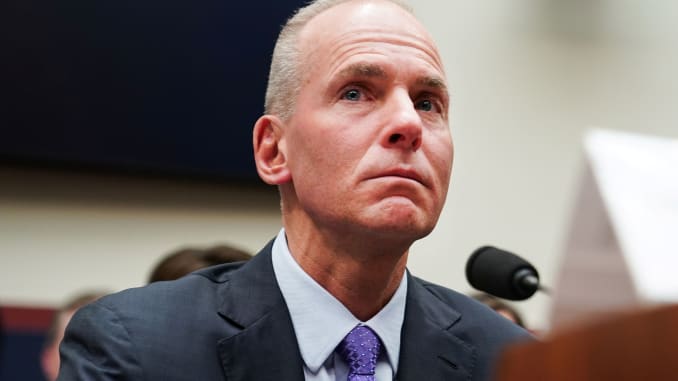
Boeing CEO Dennis Muilenburg testified before a pair of congressional committees for the first time since two deadly crashes of 737 MAX airliners, which killed a combined 346 people. His testimony follows a report in the Washington Post that top Boeing executives failed to intervene after two top pilots at the company identified problems with automated flight control software that would lead to the crashes in Indonesia and Ethiopia. The Justice Department is also conducting criminal investigation against Boeing. Muilenburg admitted Boeing failed to provide pilots with additional key safety system information.
During the hearing, Muilenburg acknowledged for the first time that he had been briefed, prior to the second crash, of messages from a test pilot who had raised safety concerns about the 737 Max. Boeing said it gave those messages to the Department of Justice in early 2019, but only alerted the Federal Aviation Administration and Congress to the existence of those messages in the past few weeks.
The House Transportation Committee released a redacted copy of a 2015 email in which a Boeing expert questioned making the flight system called MCAS depend on just one sensor to measure the plane’s pitch — its “angle of attack,” or AOA. Boeing went ahead with the single-sensor design, with no backup to prevent MCAS from pushing the plane into a dive. Investigators believe faulty readings from a single sensor triggered nose-down commands before both crashes. Muilenburg explained changes Boeing is making to the Max and other steps it is taking to improve safety. He conceded that the company “made some mistakes” in designing MCAS and telling regulators and pilots about the system.
Members of the House Committee on Transportation and Infrastructure also focused on why Boeing decided to only have one sensor on the outside of the plane, with no back-up, to alert pilots when the angle of the aircraft was off. They also asked why the plane’s safety system only gave pilots four seconds to react to take back control of the plane if a malfunction occurred. While acknowledging that Boeing planned to make fixes to the craft, some lawmakers also questioned why the company took so long to come to that conclusion. “We would do it differently if we knew what we know today,” Muilenburg said.
Several committee members pressed the CEO to make more changes in the aftermath of the crash, including giving up some of the $15 million in pay and bonus he received last year, out of $23 million in total compensation for 2018. Boeing successfully lobbied regulators to keep any explanation of the system, called MCAS, from pilot manuals and training. After the crashes, the company tried to blame the pilots, said Senator Richard Blumenthal, Democrat from Connecticut. “Those pilots never had a chance,” Blumenthal said. Passengers “never had a chance. They were in flying coffins as a result of Boeing deciding that it was going to conceal MCAS from the pilots.”
Representative Albio Sires also read a worker email sent to the head of Boeing’s 737 production team in mid-2018 that claimed high production goals were straining workers and increased the potential for mistakes. “For the first time in my history with Boeing I would be hesitant about putting my family on a Boeing airplane,” wrote the veteran Boeing employee. Muilenburg said he only became aware of the worker’s concerns after the Lion Air 737 Max crash October 29. He said the 737 production line was working at a “high rate” at the time and the issues raised by the now-retired employee had been investigated and addressed. Boeing, in fact, never cut back the production of the planes, despite the concerns. 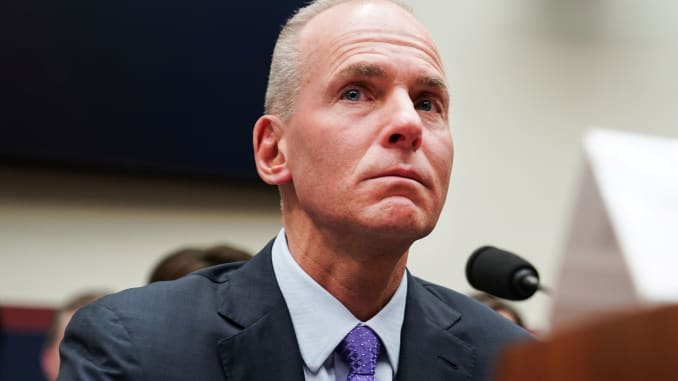
Read more
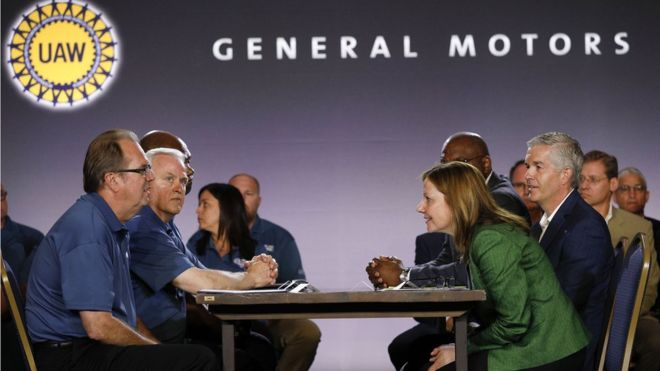
After a 40-day strike, a new four-year deal between the United Auto Workers and General Motors was approved. The contract was supported by 57% of the labor union. It includes an $11,000 bonus per member, annual raises and more affordable healthcare. General Motors still plans to close three factories in the United States.
The United Auto Workers union emerged with substantial wage increases of 3 percent in the second and fourth years and 4 percent lump sum payments in the first and third years, similar to what the union obtained in 2015. Even larger gains are in store for those in a category called “in progression,” the lower scale of a two-tier wage system negotiated in 2007 when the Detroit automakers were financially reeling.
Workers hired after that date, about a third of the overall work force, started at about half the pay of veteran employees and had no prospect of reaching the top wage, currently $31 an hour. Over the course of the new contract, the disparity will be phased out, and those with four years’ experience will rise along with more senior workers to the new top level of $32 an hour. In addition to pay increases, G.M. workers will get bonuses of $11,000 for ratifying the contract. They will continue to pay 3 percent of their cost of health care, well below the percentage that G.M.’s salaried workers contribute.
There were also rewards for temporary workers, about 7 percent of G.M.’s union work force, who will have a path to permanent employment after three years. About 900 of them will become full employees in January, the union said, and 2,000 more by 2021.
It also won commitments to new G.M. investments in United States factories. As part of the new contract, the company pledged to invest $7.7 billion in its United States plants, and another $1.3 billion in ventures with partners, providing a measure of job security. G.M. will put $3 billion toward overhauling the Detroit-Hamtramck plant, which had been scheduled to close in January. Three-quarters of the 700 workers there voted in favor of the contract.
At the same time, the agreement allows G.M. to close three idled factories permanently, including one in Lordstown, Ohio, eliminating excess manufacturing capacity at a time when auto sales are slowing. It also puts the company in a more stable position if the economy goes into a recession. The closing of the Lordstown plant was one of the main sticking points for some workers voting against the contract. “We did everything that G.M. ever asked of us at times of concessions,” said Bill Goodchild, a member of Local 1112 in Lordstown. “We feel we deserve a product.”
About 48,000 United Auto workers walked off the job over one month ago, making it the longest national strike at GM by United Auto Workers in nearly 50 years. The contract finally ends a strike that many estimate has cost GM $1.75 billion in losses. “We delivered a contract that recognizes our employees for the important contributions they make to the overall success of the company,” G.M.’s chief executive, Mary T. Barra, said in a statement.
Read more
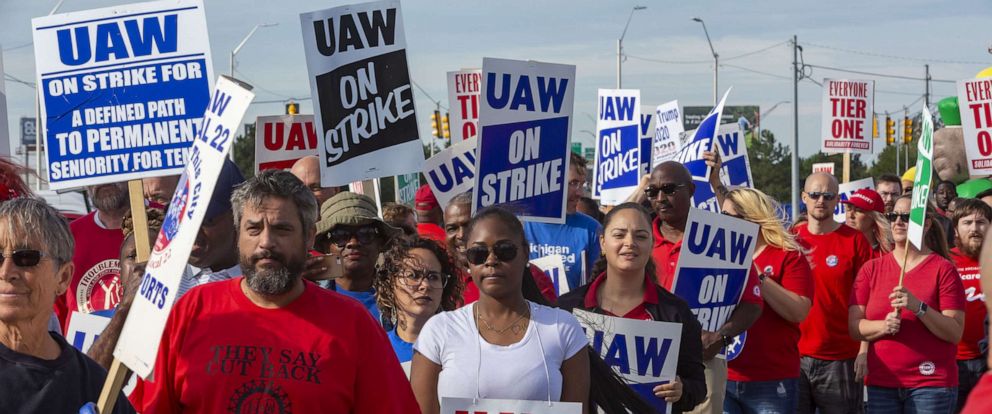
As the GM strike entered its fifth week, the United Auto Workers union announced that picketing workers can expect an extra $25 a week from the union’s strike fund. GM, on the other hand, can expect its dealers to face increased difficulty in sourcing certain replacement parts, while others worry about the prospect of subpar inventory. The UAW’s bargaining team presented a new comprehensive offer to GM as talks continued. In addition to the slightly boosted strike pay, the UAW also lifted the cap on cash earned at outside jobs. Starting Sunday, workers moonlighting at other jobs can keep the full strike payment, regardless of what they made in their alternate gig. Strike payments are typically clawed back on a dollar-for-dollar basis after the worker passes the $250 threshold.
In addition to a host of other issues, health care sits near the top of UAW concerns in this latest round of talks. With GM looking to downsize in an era of shrinking auto sales and economic uncertainty, offering generous health benefits represents a major cost to each company. An agreement was reached between GM and the UAW that keeps the previous health care arrangement intact. The agreement keeps the arrangement where workers cover just 3 percent of their health care costs — an agreement GM briefly abandoned earlier in the bargaining process. The automakers would undoubtedly seek concessions in other areas but unions are not prone to accept concessions lightly.
In the tentative deal with General Motors, the union won on many of its goals, including a path to permanent employment for temporary autoworkers, a faster route to top pay for workers hired after 2007 and a flattened pay structure for permanent employees, who would reach $32.32 per hour by the end of the four-year deal. The biggest obvious loss for the union is the continued closure of the Lordstown Assembly plant in Ohio.
The Lordstown Assembly Plant in Ohio is to remain closed, as will transmission plants in Warren and Baltimore; and a parts distribution center in Fontana, California, will close during the term of the contract. The union said it negotiated assistance packages for workers at Lordstown, Warren and Baltimore transmission plants, including $75,000 payments for eligible production workers and $85,000 for skilled workers who retire. There are also buyout options for those not eligible to retire.
Some other features of the deal include UAW-represented GM workers will get a bonus of $11,000 upon ratification of the deal and temporary workers will get $4,500. GM will invest $7.7 billion in U.S. facilities to create or retain 9,000 jobs. There will be wage increases of 3% in the second and fourth year of the contract, with 4% lump sum payments in the first and third years. Temporary workers, who have been paid $15-$19 an hour with inferior benefits to permanent autoworkers, get a path to a permanent role starting next year. Part-time workers get a path to regular status starting in 2021. These workers also get improved paid and unpaid time off. By September 2023, all permanent manufacturing employees will be at $32.32 per hour.
The tentative deal is far from perfect and the UAW is trying to persuade union workers to accept the deal. Experts said General Motors has lost more than $1 billion in profits, while line workers have lost nearly $750 million in income. With the state of Michigan are losing tax dollars, there’s a growing sentiment that something has to change soon and many hope this deal will finally end the strike.
Read more
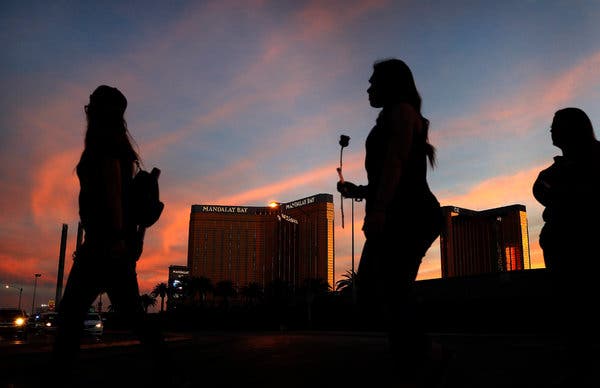
MGM Resorts International has agreed to an $800 million settlement with more than 4,000 survivors of the 2017 massacre outside the Mandalay Bay casino. The settlement was announced after survivors joined friends and families of those killed at a commemoration ceremony marking the second anniversary of the massacre. An independent claims administrator will be appointed by a court to distribute money from a settlement fund. The payout process is expected to be completed by late 2020, lawyers said.
It was October 1, 2017, when a lone gunman named Stephen Paddock used semiautomatic rifles altered with bump stocks to open fire from the resort’s 32nd floor on a country music festival below, killing 58 people and wounding 851 others. Paddock, a reclusive 64-year-old gambler, sprayed bullets on a crowd of 22,000 concertgoers from the 32nd floor of the Mandalay Bay Resort and Casino, which is owned and operated by MGM Resorts. He fired for between 10 to 15 minutes at the country music festival.
It remains the worst mass shooting in modern U.S. history. Lawyers representing survivors and victims’ wanted MGM held liable for negligence because the shooter was able to enter the hotel with luggage that held an arsenal of high-powered, assault-style weapons and thousands of rounds of ammunition. Paddock was found dead in his hotel room from a self-inflicted gunshot wound. Federal investigators have still not been able to identify a motive for the shooting.
Police found 23 guns inside his hotel suite and discovered that he had brought more than 10 suitcases to the room over several days, authorities said. Lawsuits filed since the shooting questioned how and why the hotel did not know he was hoarding high-powered weapons and ammunition in his hotel room in the days leading up to the attack. Attorney Jim Frantz, who represents nearly 200 survivors and the families of four victims, said the settlement “should be a message to all the other corporations and businesses around the country-that they need to step up their security.”
MGM Resorts International and attorneys for about 4,440 plaintiffs, said the final amount of money awarded will depend on the number of plaintiffs who choose to take part in the settlement. “While nothing will be able to bring back the lives lost or the undo the horrors so many suffered on this day, this settlement will provide fair compensation for thousands of victims and their families,” Robert Eglet, one of the lead lawyers for the plaintiffs, told reporters. Eglet called the settlement a “milestone in the recovery process for the victims of the horrifying events” of Oct. 1, 2017. Eglet and lawyers from two California firms represent about 2,500 plaintiffs.
In July 2018, MGM spurred outrage when it aggressively tried to avoid liability by filing federal lawsuits against more than 1,000 victims in a legal maneuver aimed at avoiding liability. In its civil actions, MGM claimed it did not have to pay damages to shooting victims because the company was protected by 2002 legislation, the Support Anti-Terrorism by Fostering Effective Technologies, or Safety Act. It protects corporations in the event of mass attacks committed on U.S. soil, provided services certified by the Department of Homeland Security were deployed. The company cited a federal law passed after the Sept. 11, 2001, attacks that encouraged companies to deploy anti-terrorism security technology without fear of being held responsible for damages in the event of a terrorist attack.
MGM Resorts Chairman and CEO Jim Murren now says that “prolonged litigation around these matters is in no one’s best interest. It is our sincere hope that this agreement means that scenario will be avoided.” The deal is not an admission of any wrongdoing by MGM, Murren said in the statement
Read more
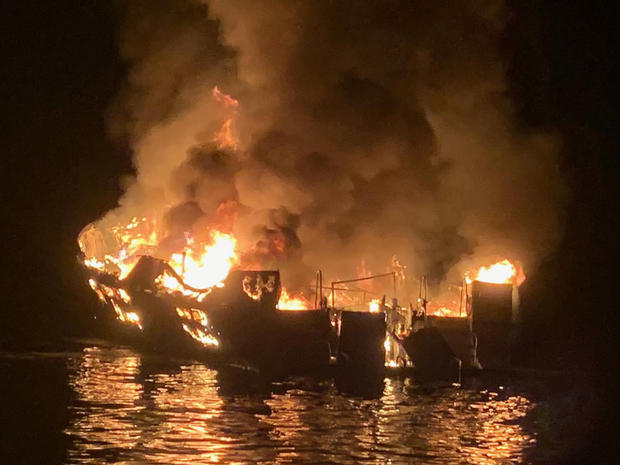
The U.S. Coast Guard has recovered all but one body after a commercial diving boat named the Conception, caught fire in the early hours of Monday morning off the coast of Santa Cruz Island in Southern California. The only survivors were five crew members of the 75-foot vessel who were sleeping on or above deck. All 33 passengers and one crew member sleeping below deck at the time of the fire were killed in horrific disaster. Authorities have yet to determine the cause of the fire.
The boat and company, Truth Aquatics Inc., are well-known in the tight-knit Southern California diving community, which is now reeling from the horrific maritime tragedy that killed teenagers, families, veteran divers, and one crew member, who were wrapping up a three-day scuba diving trip. Divers were inspecting the ship’s wreckage with plans to raise it from the ocean floor, but that process may be complicated by forecast high winds in the coming days.
The surviving crew members told a harrowing story of their frantic attempts to save the passengers trapped below deck in a bunk room already engulfed in flames. One member of the crew told of hearing a noise from his bunk on the wheelhouse deck of the Conception and that when he opened the door of the wheelhouse, he saw flames erupting from the galley area but never heard smoke alarms. He told investigators he tried to get down a ladder but flames had engulfed the ladder.
Scrambling, the other crew members jumped from the bridge of the boat to the main deck. One person broke their leg doing so. They then rushed to the galley’s double doors to try and reach the passengers below, but the fire was already too intense.
At around 3:15 a.m., the captain made a frantic mayday call to authorities, telling them that the boat was engulfed, 33 people couldn’t escape, and “there’s no escape hatch for any of the people on board.” At that point, due to heat, flames, and smoke, the crew had to jump from the boat. Two crew members swam to the back of the Conception to get the inflatable skiff, then collected the others and made it to a nearby fishing boat, the Grape Escape.
Shirley Hansen, owner of the Grape Escape, said that she and her husband awoke at 3:30 a.m. to “horrific pounding” and a group of distraught, wet men, some injured and just in their underwear. Once on the Hansen’s boat, the men tried to call 911 for rescue and two crew members then took the dinghy boat back to the Conception to try and rescue any survivors but there were none. The Hansen’s said you could hear explosions from the engulfed diving boat every couple of minutes.
Officials have been looking at the dive boat’s maintenance and inspection records, which the Coast Guard said were up to date, and trying to understand if the 34 victims who had been sleeping in rows of narrow bunks even had a chance to escape. Officials are using advanced DNA technology to identify the victims. None of the names of the dead, who ranged in age from 17 to 60, have been publicly released by authorities but friends and family have confirmed who was on the boat. Among the victims were a family of five, a teacher and his daughter, and a diving instructor and marine biologist.
Read more

Oklahoma Judge Thad Balkman has found that Johnson & Johnson helped fuel the state’s opioid crisis, and ordered the pharma giant to pay over half a billion dollars — $572 million. It’s the first major ruling against a drug company as part of the opioid epidemic, which has led to hundreds of thousands of overdose deaths around the country. The decision is the first to hold a drugmaker culpable for the fallout of the liberal opioid dispensing that began in the late 1990s which led to a nationwide epidemic of overdose deaths and addiction.
More than 400,000 people in the US have died of overdoses from painkillers, heroin and illegal fentanyl since 1999. In Oklahoma, more than 6,000 people have died of painkiller overdoses since 2000, the state charged in court papers, as the number of opioid prescriptions dispensed by pharmacies reached 479 every hour in 2017. Johnson & Johnson’s products — a prescription opioid pill and a fentanyl skin patch sold by its subsidiary, Janssen Pharmaceuticals, were a small part of the painkillers consumed in Oklahoma. Two other companies it owned had grown, processed and supplied 60 percent of the ingredients in painkillers sold by most drug companies in the US.
The decision has been hailed as a victory but the damages are much lower than the $17 billion Oklahoma had sought in the case. Balkman did not give the state everything it sought, the state attorneys asked for $17.5 billion over 30 years for treatment, emergency care, law enforcement, social services and other addiction-related needs. Judge Balkman concluded it would cost $572 million to address the crisis in the first year based on the state’s plan. He said the state did not provide “sufficient evidence” of the time and money needed to respond after that.
There are about 2,000 lawsuits in 40 other states against opioid manufacturers and distributors that are pending around the country. A massive federal lawsuit brought by almost 2,000 cities, counties and Native American tribes is scheduled to begin in October. The ruling in the first state case to go to trial could influence both sides’ strategies in the months and years to come.
Moments after the judge ruled, Johnson & Johnson, which has denied wrongdoing, said it would appeal. Company attorney Sabrina Strong said at a news conference, “We are disappointed and disagree with the judge’s decision. We believe it is flawed. We have sympathy for those who suffer from opioid use disorder but Johnson & Johnson did not cause the opioid abuse crisis here in Oklahoma or anywhere in this country.”
Oklahoma settled in March with Purdue Pharma, manufacturer of OxyContin, accepting $270 million from the company and its owners, the Sackler family, who were not named as defendants in the lawsuit. Most of that will go to a treatment and research center at Oklahoma State University, although the federal government is seeking a portion of the money. In May, two days before the trial began, the state settled with Teva Pharmaceuticals, an Israeli-based manufacturer of generic drugs, for $85 million. The Sackler family has also offered to settle the more than 2,000 lawsuits against them for their role in the opioid crisis for $10 billion to $12 billion which includes $3 billion from the Sackler family fortune. The deal was reportedly discussed last week by Purdue’s lawyers and includes a plan for Purdue to declare Chapter 11 bankruptcy before restructuring into a for-profit “public benefit trust” that would allegedly serve the many plaintiffs suing the company. The Sackler family would also relinquish ownership of Purdue under the deal.
Read more

A Northern California gunman, 19-year-old Santino William Legan, killed three people and wounded at least 19 others at the annual Gilroy Garlic Festival. Legan died at the scene of a self-inflicted gunshot wound while exchanging fire with police. Authorities say they are still determining a motive for the attack, but the gunman’s social media activity shows him promoting a manifesto on white supremacy just moments before the rampage. He also wrote in a post Sunday, “Why overcrowd towns and pave more open space to make room for hordes of mestizos and Silicon Valley white twats?”
Authorities say the gunman used an assault rifle that was purchased legally in Nevada. The AK-47-style weapon could not have been legally purchased in his home state of California because of stricter gun regulations. Six-year-old Stephen Romero was the youngest victim of the shooting. Another child, 13-year-old Keyla Salazar, and 25-year-old student Trevor Irby also lost their lives in the massacre. At least 19 victims were treated at area hospitals, including some who were treated but not admitted. The patients ranged in age from 12 to 69; 11 had gunshot injuries and eight had other injuries.
Police say Legan entered the festival by cutting through a wire fence along Uvas Creek, thus evading security screening. He began shooting at random with an assault-style rifle he bought in Nevada weeks earlier, authorities said. Police believe he acted alone. Officers at the scene reportedly engaged the shooter within a minute of the start of the shooting. The police chief credited the fast response to a heavy police presence with “many, many officers in the park”. The three officers who fired their handguns have been hailed heroes for engaging the shooter so quickly. All three have been placed on administrative leave.
Legan appeared to post a photograph from the festival on his Instagram account soon before the shooting, with captions expressing his disdain for the event. “Ayyy garlic festival time,” he wrote beneath a picture of people walking through the festival grounds. “Come get wasted on overpriced s***.” Another photograph posted on Sunday showed a sign warning of a high danger of forest fires. Its caption urged people to read “Might is Right,” a racist and sexist treatise written in the 19th century.
“Why overcrowd towns and pave more open space to make room for hordes of mestizos and Silicon Valley white twats?” the caption said, referring to people of mixed race. The account was only a few days old, and was deactivated a day after the shooting.
The city’s Police Chief Scot Smithee identified the officers as Eric Cryar, a 23-year law enforcement veteran; Hugo Del Moral, a 17-year veteran and Robert Basuino, a 13-year veteran of the Gilroy department. Smithee described his officers as incredibly humble. “I think they’re heroes. I don’t think they view themselves that way,” Smithee said. “I think they view themselves that they were just doing their job. And I don’t think they’re particularly excited about being in the limelight, but I certainly think that they deserve recognition for what they did.”
Police and FBI agents were trying to determine a motive for the shooting. “As we look at the injuries and the victims that are out there, it doesn’t seem clear that he was targeting any particular group,” said John Bennett, the special agent in charge of the FBI’s San Francisco office.
Read more
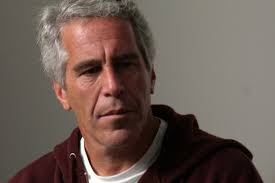
Federal prosecutors charged financier Jeffrey Epstein with one count of sex trafficking of a minor and one count of conspiracy to commit sex trafficking on July 8 2019. Epstein was first arrested at Teterboro Airport in New Jersey on July 6, after arriving back in the United States from France. Federal prosecutors also searched his New York City home over the weekend and news outlets report that during the search of his townhouse, investigators seized photographs of nude underage girls, federal prosecutors said. Epstein has pleaded not guilty on both charges. If convicted of the charges, Epstein faces a maximum of 45 years.
A federal judge in New York has denied bail to Jeffrey Epstein, declaring him a danger to the community and a significant flight risk. U.S. District Judge Richard Berman pointed to a raid by investigators on Epstein’s mansion earlier this month that found “piles of cash,” stashes of diamonds and an expired passport with Epstein’s photo next to someone else’s name listed under a Saudi address. Prosecutors accused the serial child sex abuser of possible witness tampering, saying he made payments totaling $350,000 to two people he feared could testify against him in court.
Court documents say “over the course of many years, Jeffrey Epstein, the defendant, sexually exploited and abused dozens of minor girls at his homes in Manhattan, New York, and Palm Beach, Florida, among other locations.” It also notes that “in order to maintain and increase his supply of victims, Epstein also paid some of his victims to recruit additional girls to be similarly abused.” The prosecution alleges that he sexually assaulted girls as young as 14 years old.
Epstein started his career in New York City as a math teacher at the Dalton School, but went to work at the investment bank Bear Stearns in the 1970s before founding his own firm, J. Epstein and Co., in 1982. According to Vox, he specifically marketed his services to “those with assets worth more than $1 billion,” and operates his company out of the U.S. Virgin Islands for tax reasons. Throughout the years, Epstein belonged to a high society social circle that included politicians and elitists.
Epstein’s bust comes months after a federal judge ruled his 2007 non-prosecution agreement —violated federal law by keeping Epstein’s victims in the dark. Under the sweetheart deal, Epstein dodged federal charges that might have sent him to prison for life. He instead pleaded guilty in 2008 to felony state charge of solicitation of prostitution involving a minor and sentenced to 18 months in jail. He served 13 months in a private wing of a county jail, mostly on work release, which allowed him to commute to an office outside the jail six days a week. He also registered as a sex offender. Many say it was a slap on the wrist for someone accused of abusing dozens of underage Florida girls.
“It’s been a long time coming—it’s been too long coming,” said attorney David Boies, who represents Epstein accusers Virginia Roberts Giuffre and Sarah Ransome. “It is an important step towards getting justice for the many victims of Mr. Epstein’s sex trafficking enterprise. “We hope that prosecutors will not stop with Mr. Epstein because there were many other people who participated with him and made the sex trafficking possible.”
Read more















